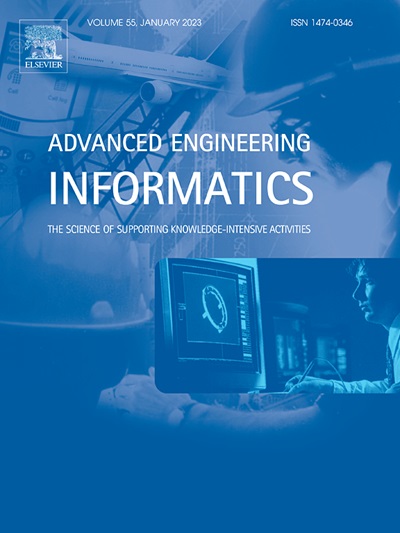Uncertainty quantification of aerosol jet 3D printing process using non-intrusive polynomial chaos and stochastic collocation
IF 8
1区 工程技术
Q1 COMPUTER SCIENCE, ARTIFICIAL INTELLIGENCE
引用次数: 0
Abstract
Aerosol jet printing (AJP) emerges as an innovative three-dimensional (3D) printing technology by offering a versatile approach for fabricating customized and conformal microelectronic devices directly onto various flexible substrates. There is, though, an inherent process uncertainty in AJP that often leads to variations in critical geometrical properties, particularly printing overspray, which diminishes the reproducibility and uniformity of the produced components. While notable advancements have been made in recent years in modeling and elucidating the critical geometrical properties of AJP, a significant research gap persists in systematically quantifying the uncertainties inherent in the developed physics-based models, which may undermine process reliability and hamper informed decision-making during printing. In this study, an uncertainty quantification (UQ) analysis is conducted through non-intrusive generalized polynomial chaos expansion (gPCE) and stochastic collocation within a developed computational fluid dynamics (CFD) model applied in AJP. This analysis quantifies the variability in model responses due to uncertainties in the input parameters. Specifically, uncertainties in the main process parameters are effectively captured by modeling them as Gaussian random variables. Subsequently, the modeled input uncertainties are mapped into the stochastic space via a stochastic collocation technique. This is followed by computational simulations of the Navier–Stokes equations conducted using the designated collocation points within a developed CFD model. Finally, a non-intrusive gPCE approach is employed to quantify the uncertainties in velocity and pressure fields, as well as in particle trajectories, based on fluctuations in input process parameters. To the best of the authors’ knowledge, there is no prior investigations made to conduct formal UQ analysis on physics-based models for AJP process. The primary contribution of this study is to address the research gap concerning the lack of systematic studies on UQ analysis for CFD models used in AJP.
求助全文
约1分钟内获得全文
求助全文
来源期刊

Advanced Engineering Informatics
工程技术-工程:综合
CiteScore
12.40
自引率
18.20%
发文量
292
审稿时长
45 days
期刊介绍:
Advanced Engineering Informatics is an international Journal that solicits research papers with an emphasis on 'knowledge' and 'engineering applications'. The Journal seeks original papers that report progress in applying methods of engineering informatics. These papers should have engineering relevance and help provide a scientific base for more reliable, spontaneous, and creative engineering decision-making. Additionally, papers should demonstrate the science of supporting knowledge-intensive engineering tasks and validate the generality, power, and scalability of new methods through rigorous evaluation, preferably both qualitatively and quantitatively. Abstracting and indexing for Advanced Engineering Informatics include Science Citation Index Expanded, Scopus and INSPEC.
 求助内容:
求助内容: 应助结果提醒方式:
应助结果提醒方式:


